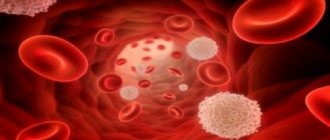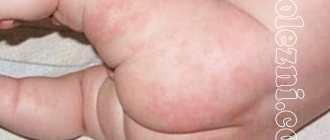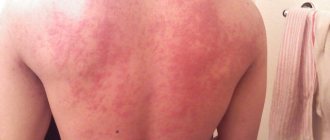Every mother wants the best for her child: health, education, career. From birth, the baby is closely monitored, but sometimes little things such as rashes or spots on the tongue are missed.
The appearance of red spots on the tongue in children can be the result of both minor mechanical damage and the manifestation of serious internal diseases.
The main reasons for the appearance of tumors on the tongue:
- Stomatitis is small red spots spread throughout the mouth. As a rule, they turn into small ulcers that cause discomfort. If a temperature appears at the same time, this means aphthous stomatitis is manifested. Stomatitis occurs when an infection enters the oral cavity and affects the mucous membrane. The cause of stomatitis can also be a source of infection in the mouth: caries, damaged teeth, inflammation of the tonsils.
- Herpes is a virus that is introduced into the body once, is constantly there and, with the slightest weakening of the immune system, manifests itself in the form of ulcers on the mucous membrane or neoplasms on the skin. It is impossible to exclude this factor; you just need to strengthen the body’s defenses to prevent a relapse.
- Scarlet fever is an infectious disease caused by streptococcus that can be transmitted from a carrier. As a result of the disease, red spots appear on the tongue, palate and tonsils. In addition to these symptoms, a rash also appears on the body, a sore throat is felt and the body temperature rises.
- Glossitis is an infectious lesion of the tongue caused by mechanical damage resulting in infection. At the same time, the tongue feels swollen, dry and unpleasant.
- Dysbacteriosis - occurs after prolonged use of antibiotics, which cause disruption of the microflora, resulting in restructuring of the mucous membrane. Such spots are not dangerous to health, and will disappear after the use of special bacteria to restore the intestinal flora
- Geographic tongue - large spots of red and white color, which are a consequence of a disease of the gastrointestinal tract and the reason to consult a doctor.
A child's healthy tongue should be light pink in color with pronounced papillae. Any redness or changes in appearance are alarming indicators.
What it is
In a healthy child, the tongue has a uniform pink color without spots or plaque. But in the presence of any pathology, spots of various colors and sizes may appear, which represent:
- An uneven accumulation of plaque on the surface of the tongue, which consists of exfoliated epithelium, tiny food particles, and microorganisms.
- Excessive proliferation of epithelium in certain areas of the mucous membranes.
- Limited inflammation.
- Benign or malignant neoplasms.
Let's look at the main reasons for the appearance of various spots and methods of treating them.
White
In a baby, the appearance of white spots on the tongue most often indicates thrush - a fungal infection of the mucous membranes due to a decrease in immune defense in the body or when taking antibiotics. Such spots are located asymmetrically, can have a variety of sizes, and are often covered with a cheesy coating.
If a child shows signs of thrush on his tongue, then it is necessary to visit a pediatrician who will find out the reasons for its appearance. Delay in treatment can cause progression of the disease and inflammation of the mucous membrane, which will cause pain and discomfort in the child. You cannot try to remove the plaque on your own; this can lead to additional trauma. To eliminate such white spots, it is most often recommended to treat the child’s oral cavity with a weak solution of baking soda or ordinary brilliant green. In more severe cases and with relapse of the disease, it may be necessary to take antifungal drugs.
What to do if a rash appears in your child’s mouth
Rash and fever in a child
To determine an accurate diagnosis and prescribe adequate treatment for children under one year of age when a rash and accompanying symptoms appear, it is necessary to contact their attending pediatrician.
Doctors prescribe the following medications as local antiseptics and antimicrobials:
- Rotokan solution as a lotion;
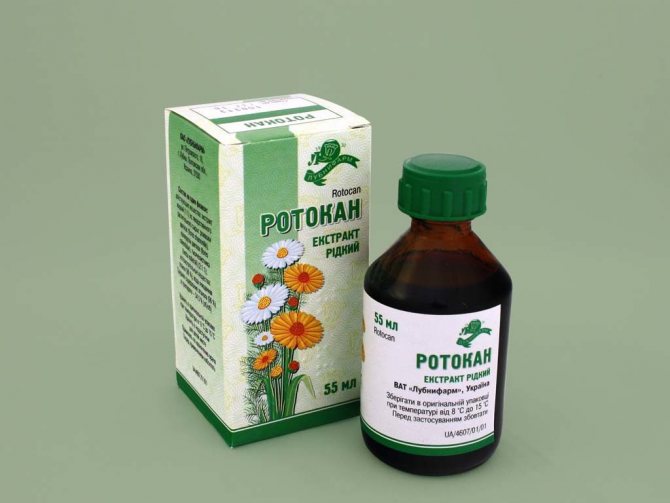
Rotokan solution is used to get rid of rashes on the tongue
- antimicrobial “Miramistin” (0.01% solution) for wiping the tongue and rinsing the mouth;
- Chlorophyllipt (herbal preparation);
- Chlorhexidine bigluconate to fight bacteria, fungus, chlamydia;
- 0.05% Chlorhexidine solution.
Important ! It should not be used in children under 36 months.
- Furacilina tablets for rinsing.
To alleviate the condition of rashes on the tongue, especially with itching, you can resort to traditional medicine recipes: these are decoctions of oak bark, tinctures of calendula, chamomile or sage. As a rule, they are all hypoallergenic and quite effective.
Advice. It is recommended to rinse the mouth several times a day with antiseptic solutions.
Geographical
If red spots and a white coating along their edges appear on the tongue, then this is a sign of a geographic tongue - desquamative glossitis. The disease is not inflammatory in nature and may indicate some hormonal disorders, worms and problems in the digestive system. Such spots do not have smooth outlines, they quickly change their location and do not bother the child in any way. They can be oval, round or have fancy shapes.
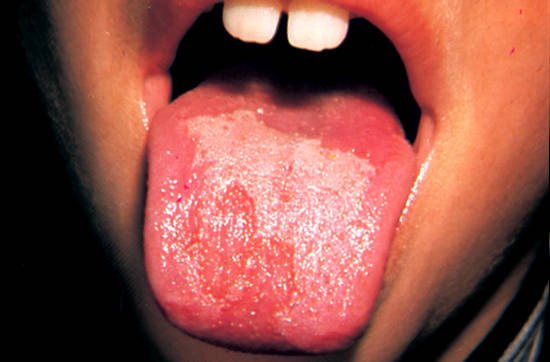
In the photo: geographical spots on the tongue of a 10-year-old child
This disease lasts a long time and often goes away on its own after some time, even without specific therapy. Sometimes antiseptics, vitamins and drugs that accelerate tissue regeneration processes are used to treat geographic tongue. But most experts (for example, Dr. Komarovsky) believe that there is no need to treat geographic spots.
Nutritional reasons
The mucous surface of the tongue tends to become stained as a result of exposure to food dyes (synthetic or natural). In this situation, a child’s black tongue is an absolutely safe phenomenon. It is necessary to temporarily exclude from the children's diet foods and drinks that can give the tongue a dark color.
These include: various berries (blackberries, blueberries, currants, prunes, mulberries, chokeberries), juices and compotes based on them, all kinds of candies, chewing gum, candies, dark-colored drinks (including black tea, coffee). Then regular oral cleaning will restore your tongue to a healthy appearance.
Careful oral care is as follows. After each meal, you should rinse your mouth - this will remove food debris and reduce the growth of bacteria. You also need to teach your child to use a special tongue scraper; a regular toothbrush can replace this tool.
In infants, if complementary foods are introduced prematurely, a dark coating on the tongue may also appear, which signals that the baby's stomach is not ready for food other than mother's milk. In this case, it is worth temporarily postponing getting to know new products or changing your approach to the nutrition system.
Reds
The appearance of red spots on a child’s tongue is a sure sign of an infectious or inflammatory process in the oral cavity:
- stomatitis;
- glossitis;
- bacterial dermatosis;
- herpetic infection.
Also, red spots may be due to an allergic reaction or consumption of foods that are bright red in color.
Very often, such formations are accompanied by unpleasant symptoms: pain in the tongue, a feeling of discomfort, increased salivation. Due to pain, children may be capricious and refuse to eat or drink. The general condition may also suffer - body temperature rises.
Only a doctor should treat red spots. After establishing an accurate diagnosis, the following may be prescribed:
- treatment of lesions with antiseptic agents;
- taking antibiotics or antivirals;
- use of anti-inflammatory medications.
Dark
Dark spots on the tongue often occur when eating food that contains dark pigments that color the plaque on the surface of the mucous membranes. Such spots do not pose any danger to the child and disappear after hygiene procedures. But there are a number of conditions that manifest as dark spots in the mouth and which can have very serious consequences.
Black
Black spots on the tongue in children most often appear during a long course of antibiotic therapy as a result of the active proliferation of microorganisms and fungi. Blackening of the tongue develops gradually and can last up to 2-3 weeks. The main treatment for this condition is to restore normal microflora in the child’s intestines and oral cavity. For this purpose, eubiotic drugs are prescribed (for example, Linex, Bifidumbacterin, Lactobacterin).
It is extremely rare that black spots on the tongue appear as a result of deep degenerative processes accompanied by necrosis of areas of the mucous membrane. This condition is very dangerous and requires emergency medical attention. The treatment of such spots is often surgical.
Blue
Blue spots in a child's mouth are a rare occurrence. They may appear in the following situations:
- The presence of severe heart failure due to heart disease and defects. Spots on the tongue appear due to stagnation of blood in the venous bed and are accompanied by blue discoloration of the lips and limbs. Their treatment consists of eliminating cardiac pathology and normalizing blood microcirculation in the vessels.
- With the growth of a benign vascular tumor - hemangiomas. This blue spot is most often single. Treatment is only possible through surgery.
Types of plaque and factors that provoke this symptom
In a newborn baby, a one-year-old child or older children, the appearance of various rashes on the tongue may indicate either a banal allergy or rather dangerous pathologies. That is why it is so important to notice the problem in a timely manner and begin its treatment.
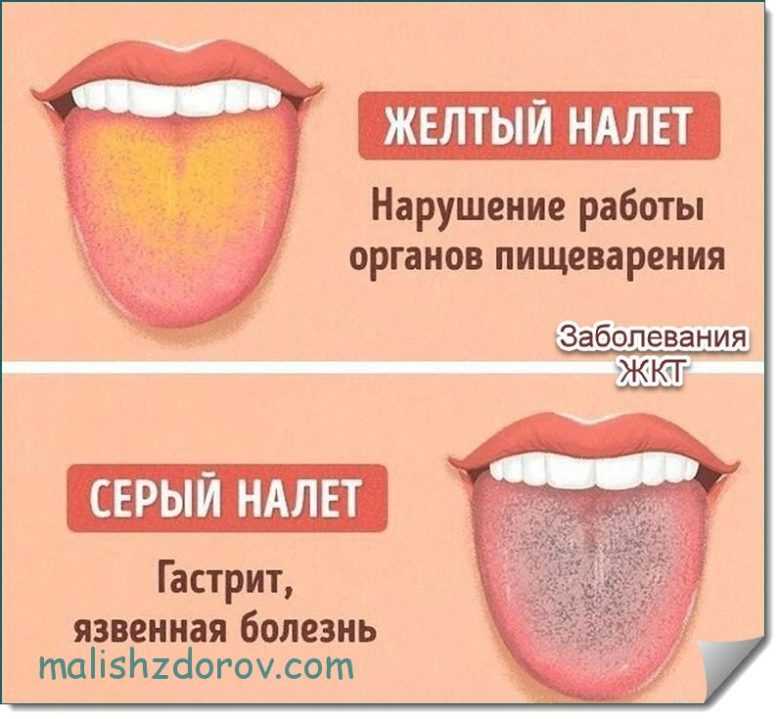
Expert opinion
Ksenia Dunaeva
User experience expert and comment moderator. Higher medical education and more than 5 years of actual practice.
Ask Ksenia
Even if your little one has a small brown, black or white spot, you should not put off visiting the pediatrician. If this symptom is accompanied by other alarming signs, for example, the baby develops a fever or the baby has become capricious and lethargic, a trip to the doctor should be immediate.
Green plaque
A spotted tongue in a child of early age or after 2, 3, 4 years can be explained by the presence of a fungal infection. In this case, rashes and spots can appear on various parts of the organ, on the tip, side, middle and even on the palate. As a rule, the plaque has a greenish or yellow tint.
You might be interested in: Vomiting in a child without fever or diarrhea
The causes of this disease include the following provoking factors:
- Infection of the baby during childbirth.
- Use of antibacterial drugs.
- Frequent regurgitation after feeding.
- Failure to comply with the rules of oral hygiene in infants.
- Insufficient cleaning of pacifiers, dishes or toys that the toddler puts in his mouth.
- Various diseases of the digestive system, most often dysbiosis.
Treatment should be aimed at maintaining oral hygiene and using antifungal agents.
Gray plaque
Having discovered a gray tint to her child’s tongue, the first thing a mother should do is remember what her baby ate over the last 24 hours. The fact is that different foods can paint the organ a characteristic shade. These could be, for example, carbonated drinks (Cola, Pepsi) or candies with artificial gray colors.
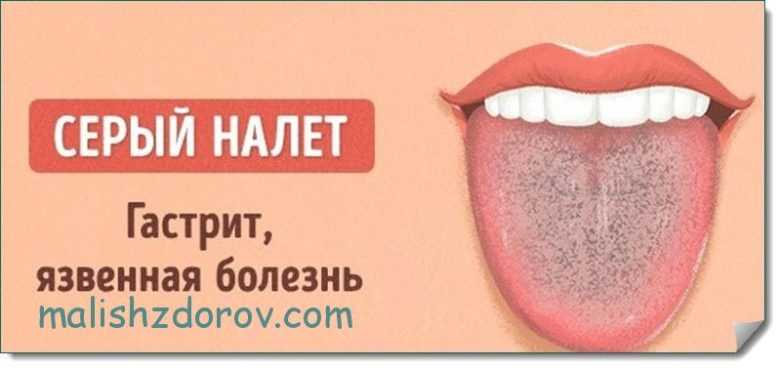
If a grayish coating or spots appear that are not associated with the use of coloring products, parents should immediately show their little one to a doctor. This is due to the fact that such signs may indicate a rather dangerous disease - scarlet fever. In this case, the grayish tint of the organ quickly disappears and a bright crimson tint appears. The papillae on the organ are noticeably enlarged, and it strongly resembles a raspberry.
Read more about the symptoms and treatment of scarlet fever in children in this article.
Another serious disease that can cause gray spots and films to appear is diphtheria. In this case, the plaque often spreads to the mucous membrane of the throat, the patient’s body temperature rises, and difficulty breathing occurs.
A grayish coating often appears in a child while taking certain medications, for example, antibiotics, drugs containing iron, or activated carbon. In this case, no specific treatment is required. The pathological color disappears on its own after stopping medication.
Brown or black growths
Spots and deposits with a brownish tint indicate problems in the functioning of the digestive tract. Often such signs are associated with stagnation of bile in the bile ducts, colitis, gastritis, enteritis and other pathologies. In infants, this color of the organ may indicate a rather dangerous condition such as dehydration. If dry skin is noted, you should consult a doctor immediately.
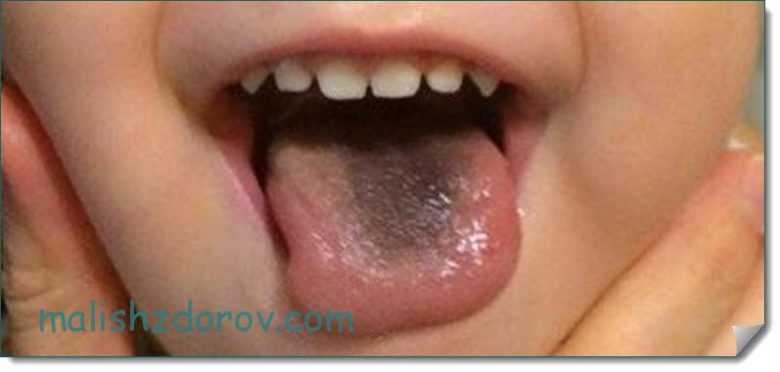
Another reason for the appearance of brown formations on the tongue is the development of an allergic reaction to medicinal herbs. In this case, mommy can take herbs.
Bald spots
The appearance of characteristic bald spots on the organ in children is accompanied by a phenomenon called atrophy of the taste buds. At the same time, bald areas appear and parents think that the tongue will peel off. Such rashes are usually painless and have different shapes with vague outlines. The causes of papillary atrophy are as follows:
- Transfer of stomatitis.
- Organ injuries, in particular cuts, bites, scratches.
- Food burns.
You might be interested in: BioGaia drops for newborns: reviews and instructions for use
This condition does not require special treatment and goes away on its own over time.
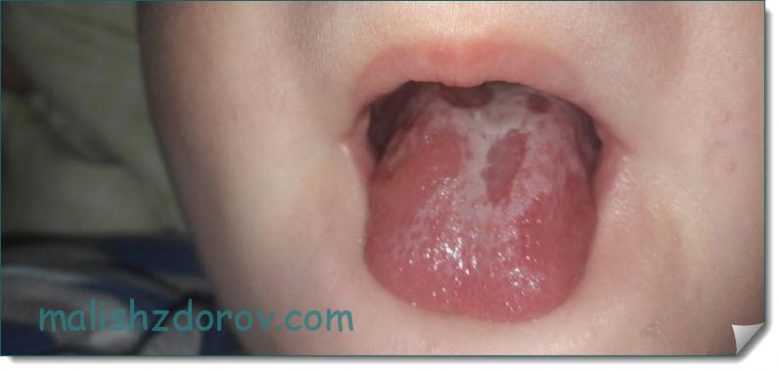
Parents should take care to ensure their child has adequate oral hygiene and to prevent further injuries.
Geographic language
Sometimes parents encounter such a symptom in their child as the appearance of large spots with a red color and a clear white border. This condition in medical practice is called “geographic tongue”. Factors that provoke this symptom include:
- Various pathologies of the digestive system.
- Infection of the body with parasitic infections.
- Period of teething.
It is important to note that such stains are not static in nature. Formations can change their size and location.
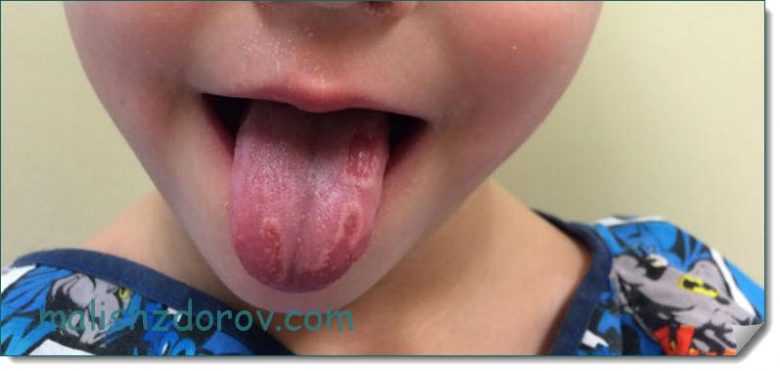
Treatment of this disease is carried out by getting rid of the underlying pathology that led to the appearance of the rash. For local treatment of stains, decoctions of medicinal herbs such as chamomile, nettle, calendula, St. John's wort, and yarrow are used.
White formations
A white, cheesy coating and spots on a child’s tongue may appear due to such a common disease as thrush or candidiasis. This condition often occurs in babies under 6 months or one year of age. When the disease is uncomplicated, a transparent whitish film appears in the baby’s mouth, which can be easily removed with a cotton swab. In more severe cases, a white cheesy coating appears on the tongue and painful ulcers form.
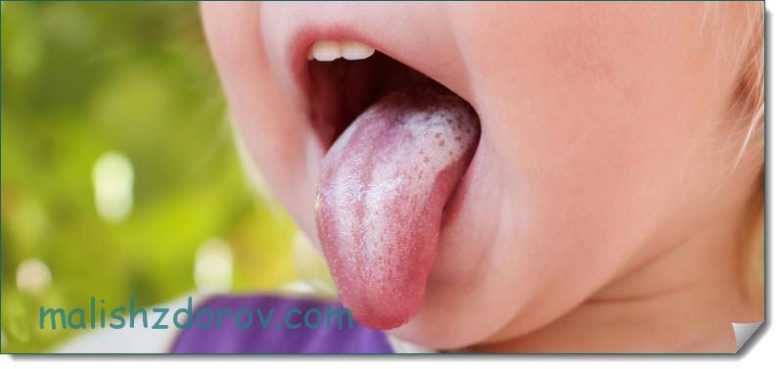
Treatment of thrush in children is carried out by maintaining careful oral hygiene, and in severe cases, local or systemic antifungal drugs are used.
Yellow tongue
According to medical statistics, the appearance of a yellowish tint to an organ or yellow spots on it more often indicate various disorders in the functioning of the gastrointestinal tract. In this case, accompanying symptoms such as belching, heartburn, bad breath, and bowel dysfunction (diarrhea or constipation) occur. Rashes of various types on the skin are also often encountered.
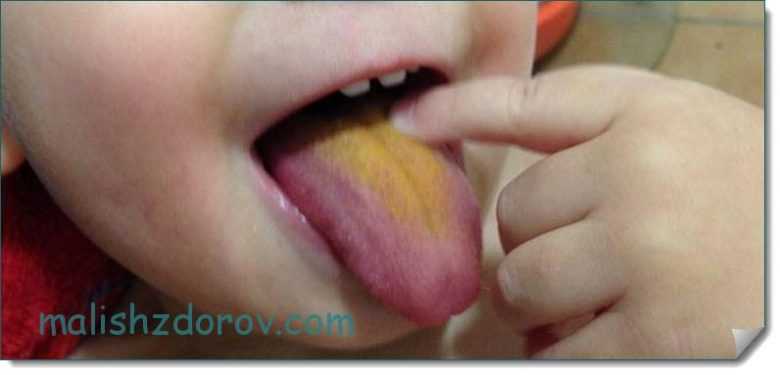
If the described signs develop, it is important to show the baby to a pediatrician. The doctor will examine the little patient and refer him to a doctor with a more specialized profile. This may require consultation with an allergist, gastroenterologist and other specialists.
Red dots and spots
Such formations in children often form due to diseases of infectious origin. These include stomatitis, glossitis, bacterial dermatosis, herpes and others. With stomatitis, for example, the formations may have a reddish or scarlet color, but they will be covered with a whitish coating. With herpes, the formations are vesicular in nature. Pimples are filled with liquid with cloudy contents. After the blisters open, ulcers and crusts appear in their place.
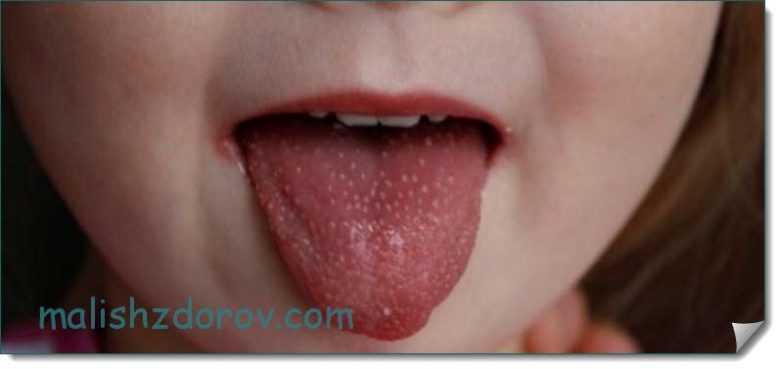
Red pimples on the tongue and mouth of a baby can be caused by various allergenic foods. These include citrus fruits, red berries and fruits, honey, chocolate and many others.
Bald
Normally, the lingual surface is covered with a large number of small taste buds, which give it a velvety appearance. If such papillae die or atrophy for any reason, “bald” spots appear. They are pink in color, irregular in shape and do not spread to the mucous membranes of the cheeks, lips or gums.
Reasons that can cause the appearance of such pink “bald” spots:
- Inflammatory diseases (glossitis, stomatitis).
- Tongue injuries.
- Burns from heat or chemicals.
“Bald” spots do not cause any inconvenience to children, but may slightly change the taste sensations. It is impossible to cure such formations, since the taste buds cannot be restored.
If you find that your one-year-old or older child’s tongue has become spotted, you should not panic and try to treat it yourself. Also, the appearance of spots on the tongue should not be ignored, as they may indicate the presence of serious diseases. It is necessary to consult a doctor who will find out the exact cause of such changes and, if necessary, select appropriate treatment for the child.

